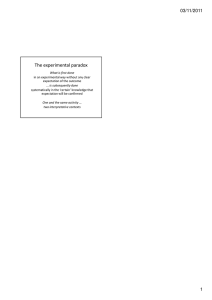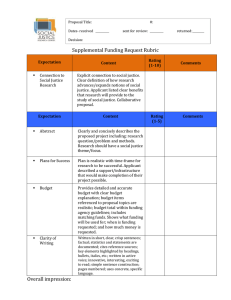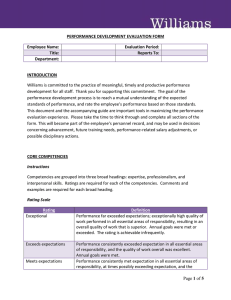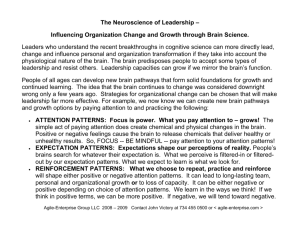PERFORMANCE MANAGEMENT PROGRAM Boulder Campus Planning and Evaluation Form
advertisement
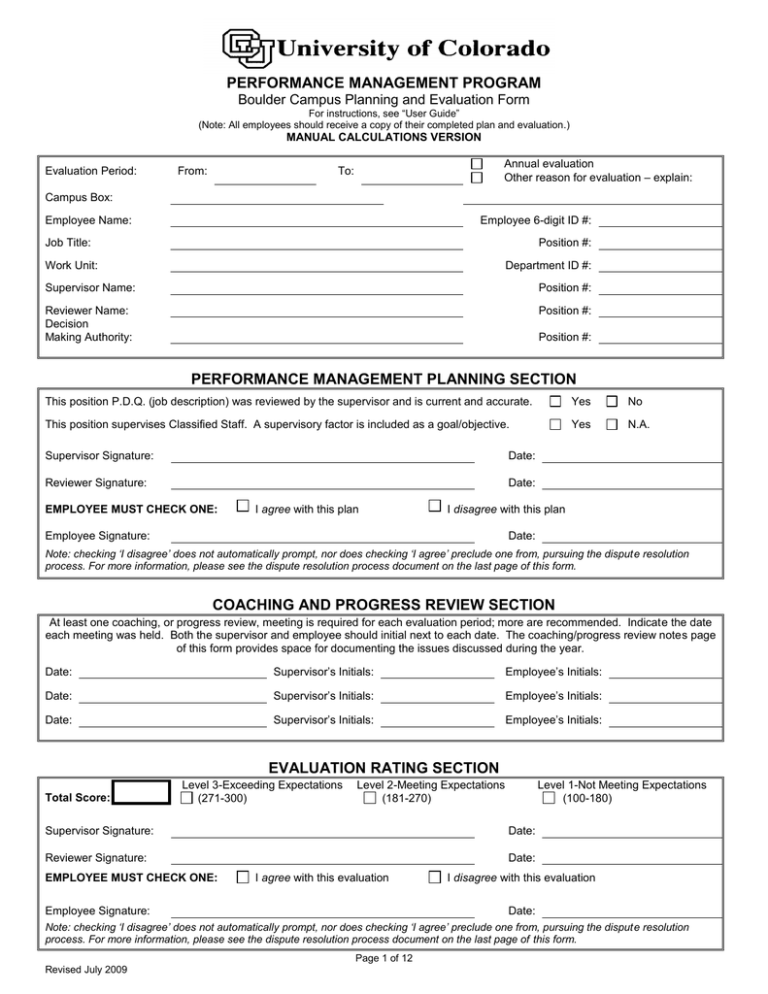
PERFORMANCE MANAGEMENT PROGRAM Boulder Campus Planning and Evaluation Form For instructions, see “User Guide” (Note: All employees should receive a copy of their completed plan and evaluation.) MANUAL CALCULATIONS VERSION Evaluation Period: From: Annual evaluation Other reason for evaluation – explain: To: Campus Box: Employee Name: Employee 6-digit ID #: Job Title: Position #: Work Unit: Department ID #: Supervisor Name: Position #: Reviewer Name: Decision Making Authority: Position #: Position #: PERFORMANCE MANAGEMENT PLANNING SECTION This position P.D.Q. (job description) was reviewed by the supervisor and is current and accurate. Yes No This position supervises Classified Staff. A supervisory factor is included as a goal/objective. Yes N.A. Supervisor Signature: Date: Reviewer Signature: Date: EMPLOYEE MUST CHECK ONE: I agree with this plan I disagree with this plan Employee Signature: Date: Note: checking ‘I disagree’ does not automatically prompt, nor does checking ‘I agree’ preclude one from, pursuing the dispute resolution process. For more information, please see the dispute resolution process document on the last page of this form. COACHING AND PROGRESS REVIEW SECTION At least one coaching, or progress review, meeting is required for each evaluation period; more are recommended. Indicate the date each meeting was held. Both the supervisor and employee should initial next to each date. The coaching/progress review notes page of this form provides space for documenting the issues discussed during the year. Date: Supervisor’s Initials: Employee’s Initials: Date: Supervisor’s Initials: Employee’s Initials: Date: Supervisor’s Initials: Employee’s Initials: EVALUATION RATING SECTION Total Score: Level 3-Exceeding Expectations (271-300) Level 2-Meeting Expectations (181-270) Level 1-Not Meeting Expectations (100-180) Supervisor Signature: Date: Reviewer Signature: Date: EMPLOYEE MUST CHECK ONE: I agree with this evaluation Employee Signature: I disagree with this evaluation Date: Note: checking ‘I disagree’ does not automatically prompt, nor does checking ‘I agree’ preclude one from, pursuing the dispute resolution process. For more information, please see the dispute resolution process document on the last page of this form. Page 1 of 12 Revised July 2009 Campus Mission Statement and Strategic Goals The vision of the University of Colorado at Boulder is: “To lead in learning, research, teaching, and service to benefit and enhance the quality of life for the people of Colorado.” CU – Boulder’s strategic goals are: Enhance undergraduate learning and education of students Promote excellence in research and graduate education Nurture a diverse campus environment Lead in the use and study of technology Provide broad access to institutional resources and service to the citizens of Colorado Provide outstanding student support services Provide outstanding administrative support services Build on existing excellence The Mission of the Work Unit The Role of This Position The position’s role in the accomplishment of the mission and objectives of the work unit and the campus is to: (Use question #2, "Briefly summarize the purpose of this position," from the P.D.Q. or similar information from the job description.) Page 2 of 12 Revised July 2009 Key to Rating Level Definition of Level 3 (Exceeding Expectations) This rating represents consistently exceptional and documented performance or consistently superior achievement beyond the regular assignment. Employees make exceptional contribution(s) that have a significant and positive impact on the performance of the unit or the organization and may materially advance the mission of the organization. The employee provides a model for excellence and helps others to do their jobs better. Peers, immediate supervision, higher-level management and others can readily recognize such a level of performance. Definition of Level 2 (Meeting Expectations) This rating level encompasses a range of expected performance. It includes employees who are successfully developing in the job, employees who exhibit competency in work behaviors, skills, and assignments, and accomplished performers who consistently exhibit the desired competencies effectively and independently. These employees are meeting all the expectations, standards, requirements, and objectives on their performance plan and, on occasion, exceed them. This is the employee who reliably performs the job assigned and may even have a documented impact beyond the regular assignments and performance objectives that directly supports the mission of the organization. Definition of Level 1 (Below Expectations) This rating level encompasses those employees whose performance does not consistently and independently meet expectations set forth in the performance plan as well as those employees whose performance is clearly unsatisfactory and consistently fails to meet requirements and expectations. Marginal performance requires substantial monitoring and close supervision to ensure progression toward a level of performance that meets expectations. Although these employees are not currently meeting expectations, they may be progressing satisfactorily toward a level 2 rating and need coaching/direction in order to satisfy the core expectations of the position. For Automatic Calculations This form is setup to automatically transfer the goal/ objective weights and the ratings to the summary table. When you are finished entering the numbers for weights and/or ratings, you must tab out of the current cell or select a different cell to have the summary table updated. Page 3 of 12 Revised July 2009 Instructions for Completing the Summary of Performance table: For Performance Plan: On page 5 and 6, develop goals or objectives for the position and methods to measure results. (not all goals/objectives need to be completed) On page 7 and 8, for each of the state-mandated core competencies, check all factors that apply to the position. Assign a weight to each goal or objective, and to each core competency (each core competency must have a weight of at least 1), to identify its relative value to performance by the position. Note that the sum for all weights must equal 100. For Performance Evaluation: On pages 5 through 8, identify the results achieved by the employee for each goal or objective and for each state-mandated core competency. Assign a performance rating level (exceeding expectations, meeting expectations, not meeting expectations) for the results achieved for each goal or objective and for each state-mandated core competency. Record this rating on pages 5 through 8. For each row: Multiply the pre-assigned weight times the numeric equivalent of the rating (1 – 3) to determine the numeric score for each goal or objective and each core competency. Decimals may be used to determine rating, i.e., 2.25. Total the individual numeric scores to determine the overall points achieved by the employee. Determine the employee’s overall rating level using the conversion printed below the summary table. SUMMARY OF PERFORMANCE GOAL OR OBJECTIVE Weight Numeric Equivalent of Rating (1 – 3) Numeric Score Goal or Objective 1 Goal or Objective 2 Goal or Objective 3 Goal or Objective 4 Goal or Objective 5 Goal or Objective 6 Goal or Objective 7 Goal or Objective 8 Goal or Objective 9 Communication Interpersonal Skills Accountability Job Knowledge Customer Service Extra Core Competency (if needed) TOTAL MUST EQUAL 100 Conversion of Total Numeric Score to Descriptive Rating 271-300 Exceeding Expectations (Level 3) 181-270 Meeting Expectations (Level 2) Page 4 of 12 Revised July 2009 100 - 180 Not Meeting Expectations (Level 1) GOALS AND OBJECTIVES ASSOCIATED WITH SUCCESS IN THIS POSITION “Goal or objective” is a specific statement or requirement. “Measurement method” reflects the evaluation basis for the expected results. “Results achieved” are the accomplishments of the employee during the evaluation period. Decimals may be used when determining ratings, i.e. 2.25. Goal or objective: Results achieved: Level 3 – Exceeding Expectation Level 2 – Meeting Expectation Measurement method: 1 Level 1 – Below Expectation Weight of goal or objective: Goal or objective: Goal or objective rating: Results achieved: Level 3 – Exceeding Expectation Level 2 – Meeting Expectation Measurement method: 2 Level 1 – Below Expectation Weight of goal or objective: Goal or objective: Goal or objective rating: Results achieved: Level 3 – Exceeding Expectation Level 2 – Meeting Expectation Measurement method: 3 Level 1 – Below Expectation Weight of goal or objective: Goal or objective rating: Page 5 of 12 Revised July 2009 Goal or objective: Results achieved: Level 3 – Exceeding Expectation Level 2 – Meeting Expectation Measurement method: 4 Level 1 – Below Expectation Weight of goal or objective: Goal or objective: Goal or objective rating: Results achieved: Level 3 – Exceeding Expectation Level 2 – Meeting Expectation Measurement method: 5 Level 1 – Below Expectation Weight of goal or objective: Goal or objective: Goal or objective rating: Results achieved: Level 3 – Exceeding Expectation Level 2 – Meeting Expectation Measurement method: 6 Level 1 – Below Expectation Weight of goal or objective: Goal or objective rating: Page 6 of 12 Revised July 2009 Goal or objective: Results achieved: Level 3 – Exceeding Expectation Level 2 – Meeting Expectation Measurement method: 7 Level 1 – Below Expectation Weight of goal or objective: Goal or objective: Goal or objective rating: Results achieved: Level 3 – Exceeding Expectation Level 2 – Meeting Expectation Measurement method: 8 Level 1 – Below Expectation Weight of goal or objective: Goal or objective: Goal or objective rating: Results achieved: Level 3 – Exceeding Expectation Level 2 – Meeting Expectation Measurement method: 9 Level 1 – Below Expectation Weight of goal or objective: Goal or objective rating: Page 7 of 12 Revised July 2009 CORE COMPETENCIES The following core competencies have been defined by the State Personnel Director for inclusion in the performance plans of every employee classified in the State Personnel System. Mastery of the core competencies will vary depending upon the background and duties of an employee. A score for each competency is required. Decimals may be used when determining rating, i.e., 2.25. Communication: The employee effectively communicates by actively listening and sharing relevant information with co-workers, supervisor(s) and students and other external constituents so as to anticipate problems and ensure effectiveness of the University or campus. Results achieved: Level 3 – Exceeding Expectation Level 2 – Meeting Expectation Level 1 – Below Expectation 1 Measurement Factors: Demonstrates good listening skills Uses appropriate language and terminology Speaks in a manner that will be understood, is courteous, and effective Communicates to ensure others are informed and current Is considerate of the communication skills of others OTHER Goal or objective rating: Weight of core competency: Interpersonal Skills: The employee interacts effectively with others to establish and maintain smooth working relations. Results achieved: Level 3 – Exceeding Expectation Level 2 – Meeting Expectation Level 1 – Below Expectation 2 Measurement Factors: Maintains smooth working relations with others Is helpful and supportive of others as necessary Is understanding of the feelings and needs of co-workers and others Contributes to maintaining a high level of morale and motivation Is appreciative of the diversity of coworkers, customers, students, and visitors Supports the institution’s commitment to diversity OTHER Weight of core competency: Accountability: The employee demonstrates responsible personal and professional conduct, which contribute to the overall goals and objectives of the University or campus. Goal or objective rating: Results achieved: Level 3 – Exceeding Expectation Level 2 – Meeting Expectation 3 Level 1 – Below Expectation Measurement Factors: Complies with unit policies relating to attire or dress code Uses breaks and break times appropriately Avoids conducting personal business during work hours Represents the work unit to others in person, by phone, e-mail, etc. in a credible manner Complies with institutional policies Complies with work unit standards for requesting leave and calling in sick Accepts schedule changes and responds to special situations OTHER Weight of core competency: Page 8 of 12 Revised July 2009 Goal or objective rating: Job Knowledge: The employee is skilled in job-specific knowledge which is necessary to provide the appropriate quantity and quality of work in a timely and efficient manner. Results achieved: Level 3 – Exceeding Expectation Level 2 – Meeting Expectation Level 1 – Below Expectation 4 Measurement Factors: Demonstrates the necessary knowledge, skills and abilities to complete work assignments Meets deadlines in completing work assignments Produces quality work Work efforts and product contribute to a higher quality environment Consistently meets performance expectations OTHER Goal or objective rating: Weight of core competency: Customer Service: The employee works effectively with internal/external constituents to satisfy service expectations. Results achieved: Level 3 – Exceeding Expectation Level 2 – Meeting Expectation Level 1 – Below Expectation Measurement Factors: 5 Provides prompt and friendly service to internal and external customers Helps identify customer needs through courteous questioning and a sincere desire to be helpful Follows up with customers, as appropriate, to ensure satisfaction Considers and recommends alternatives to customers as appropriate Is as helpful with telephone contacts as with in-person interactions Participates in Campus and/or community service projects as appropriate OTHER Goal or objective rating: Weight of core competency: Extra Core Competency (if needed): Results achieved: Level 3 – Exceeding Expectation Level 2 – Meeting Expectation Level 1 – Below Expectation 6 Measurement Factors: Goal or objective rating: Weight of core competency: Page 9 of 12 Revised July 2009 NARRATIVES Training Plans: Planning Narrative: Evaluation Narrative: Page 10 of 12 Revised July 2009 COACHING/PROGRESS REVIEW NOTES: Date: Issues Discussed: Date: Issues Discussed: Date: Issues Discussed: Page 11 of 12 Revised July 2009 DISPUTE RESOLUTION PROCESS This overview of the Dispute Resolution Process is an abbreviated version of the formal process that is available in its entirety at your campus Human Resources department. Before initiating this process, you are encouraged to have a meeting with your supervisor to identify and possibly rectify the issue about which you are concerned. What Issues are Disputable? The State Personnel Director has defined the specific performance management matters that may be disputed by an employee and has specified the stages at which these matters will be reviewed. They are: 1. The individual final overall performance evaluation, including lack of a final overall evaluation 2. The application of the university’s performance management program to the individual employee’s final overall evaluation Please note that the first issue must be decided at the first stage, and is not reviewable further. Issue 2, if not resolved at the campus level, is reviewable at the second stage. What Issues are Not Disputable? 1. The content of the University’s performance management program (or an approved campus modification of the program); 2. Matters related to the funds appropriated; 3. The performance evaluations and merit pay of other employees; First Stage—Internal: University of Colorado Campus Level To initiate the internal review process, the employee must submit a review request on the standard university form to the Decision Making Authority. When disputing the individual final overall performance evaluation rating, the written request must be filed within five (5) working days after the meeting at which the rater formally presents the employee with his/her final overall performance evaluation and during which the employee and rater discuss the performance rating. Copies of the written request must be submitted to the supervisor and to the Office of Labor Relations. Unless there are extraordinary circumstances, the Decision Making Authority or designee must, within five working days from receipt of the form, meet with the employee, the supervisor, and with any other persons whom the employee or the supervisor deem to have pertinent information. The Decision Making Authority remains responsible for scheduling the meeting with the affected parties and for adhering to the schedule for completion of the review. After the meeting, the Decision Making Authority has five working days to render a decision. Second Stage—External: State Personnel Director The second stage applies to issue 2 only. If unsatisfied with the decision of the Decision Making Authority the employee may file a written request for external review with the State Personnel Director within five working days from the date the internal decision is received. This request must be submitted on the standard Consolidated Appeal/Dispute Form available from the Office of Labor Relations. Mail, hand-deliver, or fax the form to: State Personnel Board 1525 Sherman Street, 4thFloor Denver, CO 80203 Fax: 303-866-5038. The request must include a copy of the original written performance management issue(s) raised by the employee and the final written decision from the internal review stage. A copy of this written request also must be sent to the Office of Labor Relations. This request will be screened based upon specific criteria established by the State Personnel Director, and if it is determined that further review is not warranted, that decision is final and binding and the employee will be notified accordingly. If, however, further review is warranted, the Director shall select a qualified neutral third party to review the decision who must within thirty days issue a written decision, which is final and binding. Page 12 of 12 Revised July 2009
